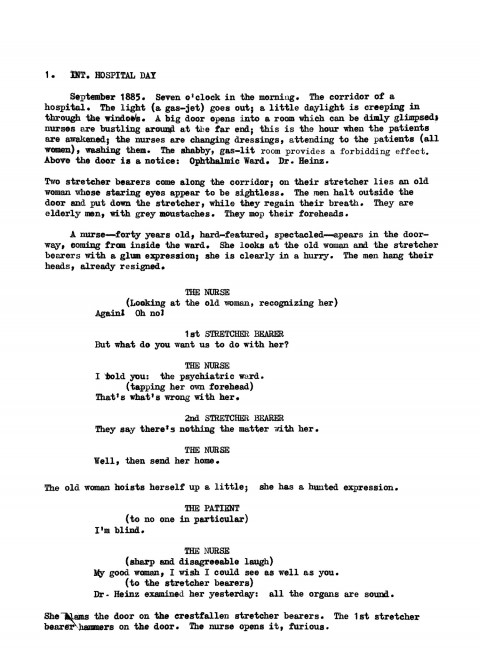Not only does the documentary Eraserhead Stories offer as much information as you’ll find anywhere on the making of David Lynch’s first feature film, it has a few Lynchian qualities of its own. For almost an hour and a half, David Lynch sits down behind a microphone and reminisces about the six years his ragtag team spent putting the movie together. But he does it in black-and-white, in front of a curtain, smoking, like something out of an early-1950s television broadcast. The ambient dull roar of an ill wind appears, intermittently and inexplicably, on the soundtrack. Photographs flash by, supporting some of Lynch’s inspiring, arduous, and bizarre recollections. Many of his stories deal with the nuts and bolts of bringing one’s financially impoverished but creatively overflowing early movies into reality. Others involve tubs filled with milk, sets covered in peas, dead cats impregnated with tar, and the ghost of oil tycoon Edward L. Doheny.
Lynch’s fans, and even his detractors — perhaps especially his detractors — will tell you that his films could have come from the mind of no other director. But Eraserhead Stories gives you a clear idea about the kind of dedicated, familial production atmosphere it takes to get an idea successfully out of Lynch’s brain and onto celluloid. On Eraserhead’s intermittently active, often-moving shoot, everyone had to work several jobs: Lynch chucklingly remembers troweling a great deal of plaster alongside star Jack Nance, and he gives collaborator Catherine Coulson a call to talk about all the myriad tasks she handled. Though the unusual visual, aural, and narrative requirements of Eraserhead meant nobody had any easy work, Lynch and his team managed to finish the picture and live every creative filmmaker’s dream: to make a movie which doesn’t compromise, which no viewer forgets, and toward which nobody feels neutral. H/T Biblioklept
Related content:
What David Lynch Can Do With a 100-Year-Old Camera and 52 Seconds of Film
David Lynch’s New ‘Crazy Clown Time’ Video: Intense Psychotic Backyard Craziness (NSFW)
David Lynch’s Surreal Commercials
David Lynch and Interpol Team Up on Short Film
Colin Marshall hosts and produces Notebook on Cities and Culture. Follow him on Twitter at @colinmarshall.









